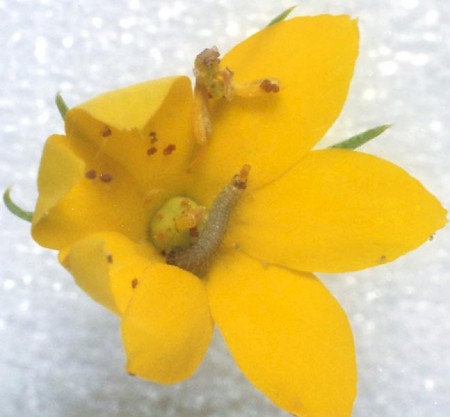
45.021 BF1507
Dowdy Plume Stenoptilia zophodactylus
(Duponchel, 1840)
Wingspan 16-23 mm.
This species is widely distributed in southern Britain, but is usually locally restricted to sparsely vegetated habitats, such as sea-cliffs, sand hills, old sand and gravel workings and chalky or dry pastures, where its foodplants grow in quantity and the moth may be abundant.
The adult can be found from July to September in two or more overlapping broods. It generally flies from dusk onwards, but it can be disturbed from low herbage in the daytime.
It can easily be mistaken for a faded specimen of the common Stenoptilia bipunctidactyla (agg.), so moths taken near large amounts of the foodplants should be examined closely.
Wing markings may vary or be obscured in worn specimens, but S. zophodactylus is the only British member of the genus with white legs and an all white 'saddle' on the dorsum of segments T3 & A1. Other species have brown legs, and buff at the centre of the saddle. S. zophodactylus has a deeper wing cleft and is generally more lightly built, with narrower wings and thinner legs, than its congeners.
The camouflaged larvae, varying from green to brownish yellow, feed in two or more generations from June to October or later, on centaury (Centaurium erythraea), yellow-wort (Blackstonia) and gentian (Gentiana). Initially the larva mines a basal leaf, subsequently feeding in flower buds (which turn yellow), opened flowers and foliage.
The slender green or red pupa is attached to the foodplant. It is uncertain which stage(s) overwinter.

 UKMoths
UKMoths 







